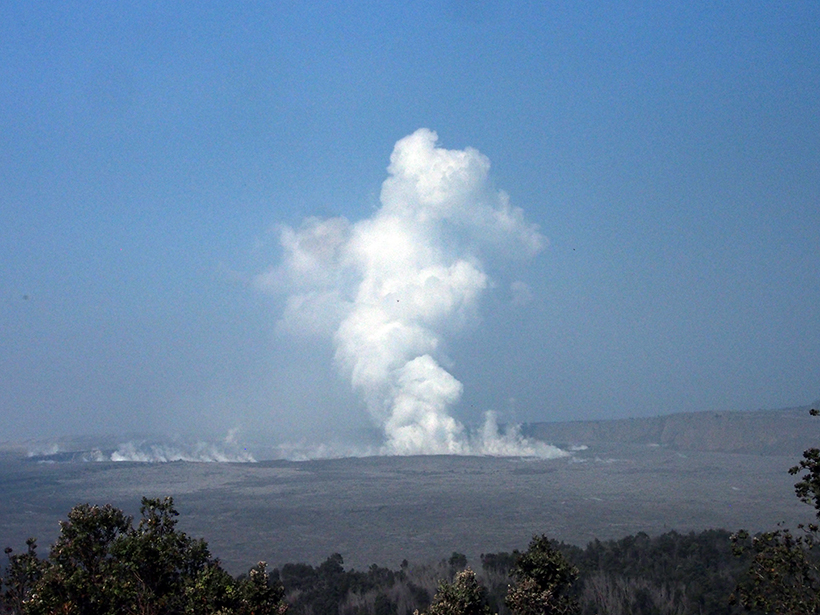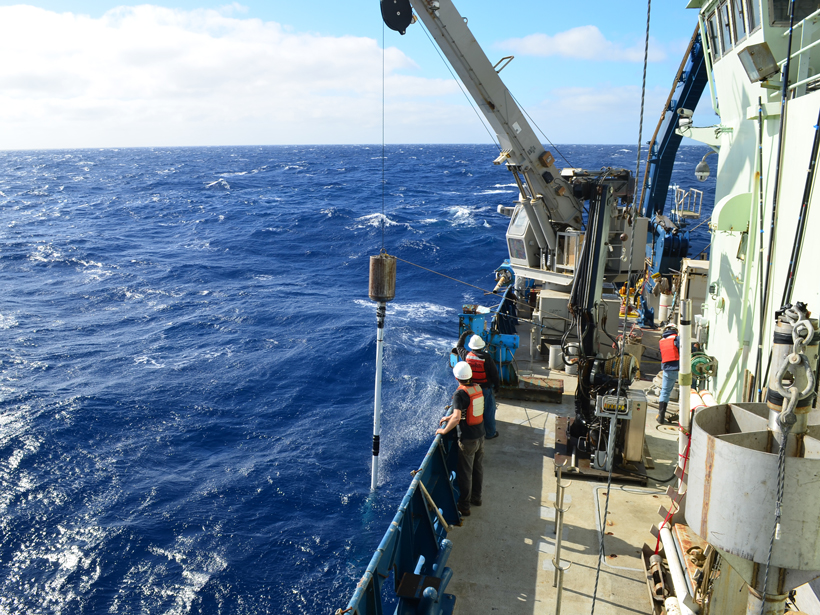Volcanologists say it’s too soon to know whether the sudden drop in activity signals the end of the eruption or just a pause.
hydrothermal systems
Two Active Volcanoes in Japan May Share a Magma Source
Evidence collected following the 2011 eruption of Japan’s Shinmoedake volcano suggests that the powerful event affected the behavior of an active caldera nearby.
Four Ways Kīlauea Is Redrawing the Map
From burying communities to building new land, this historic eruption is changing the landscape of Hawai‘i Island.
Huge Spike in Quakes Badly Damages Kīlauea Observatory
Meanwhile, some scientists say that the 35-year eruption from the Pu‘u Ō‘ō vent has ended and that the flows since 3 May are a new eruption. Others take issue with this view.
Faster Lava Flows, Explosive Eruptions Begin at Kīlauea
Scientists say the dramatic increase in flows is likely due to the arrival of younger, hotter magma in the system.
Steam-Driven Blasts Last Seen at Kīlauea in 1924 May Recur
Sinking magma levels and rockfalls prompt warnings, flight restrictions, and the shutdown of Hawai’i Volcanoes National Park.
Iron Readings Hint That Ocean Depth Influences Seabed Volcanism
Water pressure on mid-ocean ridges may affect magma production kilometers beneath the ocean floor.
What Feeds Indonesia’s Destructive Mud Eruption?
New advances in seismic investigations suggest links in plumbing between nearby magma volcanoes and a mud-erupting system that has been spewing for more than a decade.
Exploring the Restless Floor of Yellowstone Lake
Yellowstone Lake, far from any ocean, hosts underwater hot springs similar to those on mid-ocean ridges. A research team is investigating the processes that drive the lake’s hydrothermal systems.
Sounding the Black Smoker Plumes
Imaging sonar, an emerging technique for monitoring heat from seafloor hydrothermal vents, gives scientists a new look at interacting systems off the coast of Canada.










